Table of Contents
Why should I grow my own tomatoes?
Here are several reasons why you might consider growing your own tomatoes:
- Flavour: Freshly picked, vine-ripened tomatoes taste much better than supermarket tomatoes, which are often picked before they are fully ripe and have to be transported long distances.
- Health benefits: Tomatoes are a good source of vitamins C and K, as well as the antioxidant lycopene, which has been linked to a reduced risk of certain diseases, such as heart disease and some types of cancer.
- Cost savings: Buying fresh, high-quality tomatoes can be expensive, especially if you’re buying organic or heirloom varieties. By growing your tomatoes, you can save money and enjoy the freshest possible produce.
- Environmental responsibility: Growing your own food is a way to reduce your carbon footprint and minimize the impact of food production on the environment. When you grow your tomatoes, you can control the use of pesticides and other chemicals, and choose organic or sustainable growing methods.
- Sense of accomplishment: Growing your tomatoes can be a rewarding experience, as you watch your plants grow from seeds to mature plants, and then harvest the juicy, ripe fruit.
- Enjoyment: Gardening can be a relaxing and enjoyable hobby, and growing your tomatoes is a great way to connect with nature and get some exercise in the fresh air.
Whether you’re looking to save money, enjoy fresh produce, growing your tomatoes can be a rewarding and delicious experience.
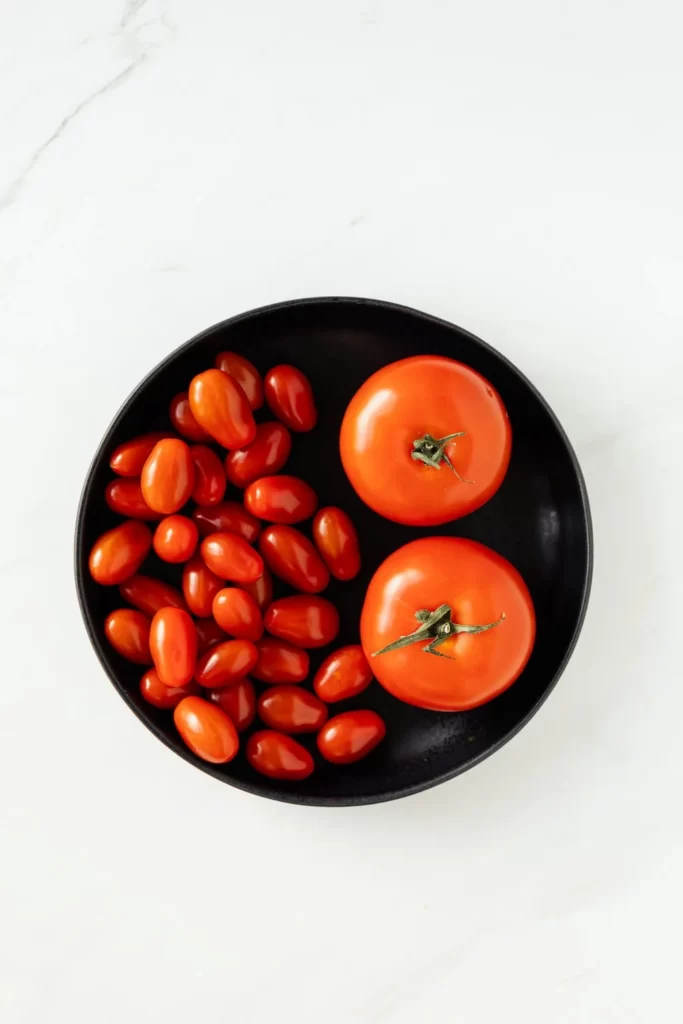
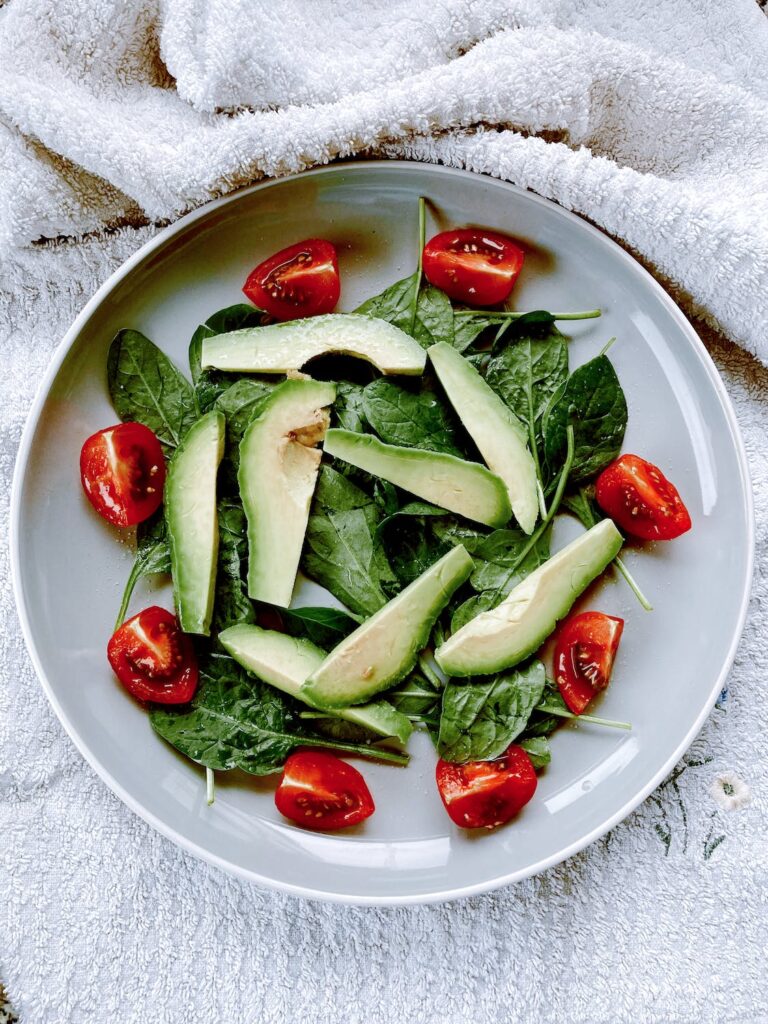
How long does it take to grow tomatoes?
Tomatoes typically take between 70 to 85 days from planting to harvest, depending on the variety and growing conditions. This can vary based on factors such as the climate, soil conditions, and the type of tomato plant. For instance, cherry tomatoes can be harvested within 50 days, while beefsteak tomatoes may take up to 100 days. For the best results, plant tomatoes in a sunny location with well-drained soil and to follow appropriate care guidelines for your specific variety.
Can tomatoes grow in hot and dry climates?
Yes, tomatoes can be grow in hot and dry climates, but they may require special care to thrive. In hot and dry conditions, ensure that soil is well-drained and regularly watered. The high heat and lack of moisture can cause the soil to quickly dry out. Provide shade for the plants during the hottest parts of the day can help protect them from excessive heat stress. In very arid regions, irrigation systems may be necessary to ensure that the plants receive adequate moisture. Drip irrigation or soaker hoses are good for watering directly to the roots, which can reduce evaporation and conserve water. In addition, choose more drought-tolerant tomatoes that are well-suited to hot and dry conditions. For example, cherry tomatoes are often more heat-tolerant and are a good option for hot and dry climates.
Can tomatoes grow in cold climates?
Tomatoes can grow in cold climates, but it requires some special considerations to ensure success. In countries with colder climates, the growing season is often shorter. The temperature may not be warm enough for tomatoes to mature properly. It is best to store seeds indoors several weeks before the last expected frost, and then transplant the seedlings into the garden after the frost has passed. Cloches, row covers, or other forms of the protective cover can also help extend the growing season and protect the plants from frost and cold weather. Another option for growing tomatoes in cold climates is to use a greenhouse or high tunnel systems, which can provide a warm and protected environment for the plants. Choose cold-tolerant tomatoes that are well-suited to cooler climates. For example, determine the varieties, which are compact and produce a concentrated crop, are often more suitable for cooler climates.
What is the best type of tomato to grow?
The best type of tomato to grow depends on your individual preferences and growing conditions. Here are a few popular tomatoes that are often highly regarded by gardeners:
- Beefsteak tomatoes: These large, juicy tomatoes are a favourite for slicing and eating fresh.
- Cherry tomatoes: These small, sweet tomatoes are popular for snacking, salads, and sauces. They are also easier to grow than larger varieties and produce a high yield.
- Roma tomatoes: These oblong-shaped tomatoes have firm flesh and a sweet, slightly acidic flavour. They are good for canning, cooking, and making sauces.
- Heirloom tomatoes: These traditional, non-hybrid varieties come in a wide range of sizes, shapes, and colours and are prized for their unique flavours and textures.
- Grape tomatoes: These small, sweet tomatoes are a popular snacking tomato and are also good for salads and sauces.
When choosing a tomato variety, consider the growing conditions in your area, such as climate, soil type, and the length of the growing season. Some tomato varieties are more heat-tolerant or cold-tolerant, for example, and some are more disease-resistant. Provide proper care for your tomato plants, such as proper watering and fertilisation, to ensure a successful harvest.
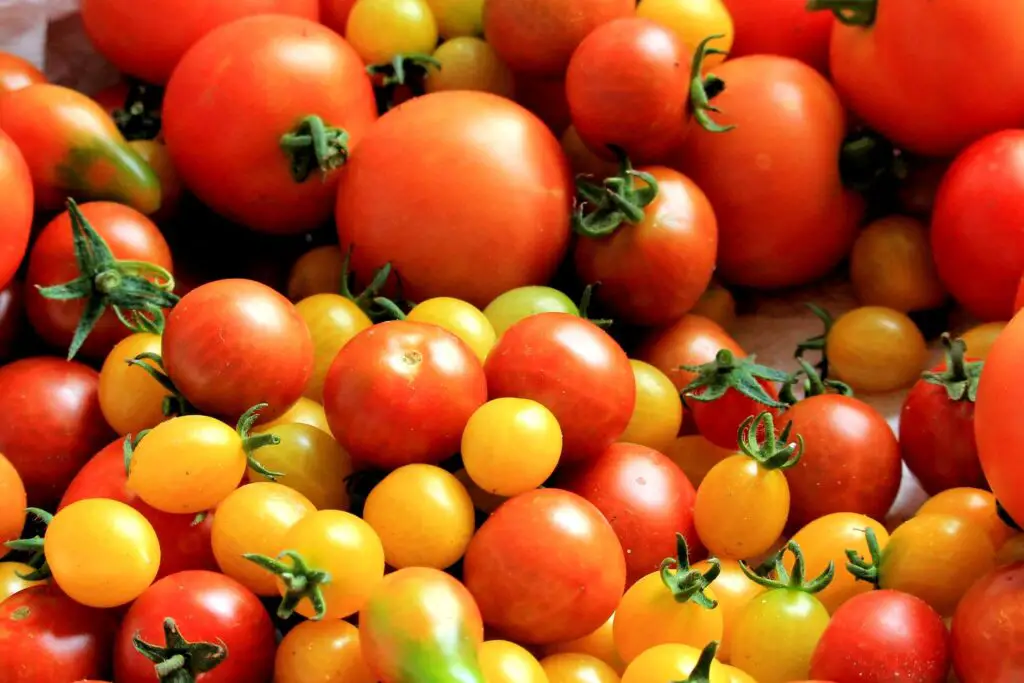
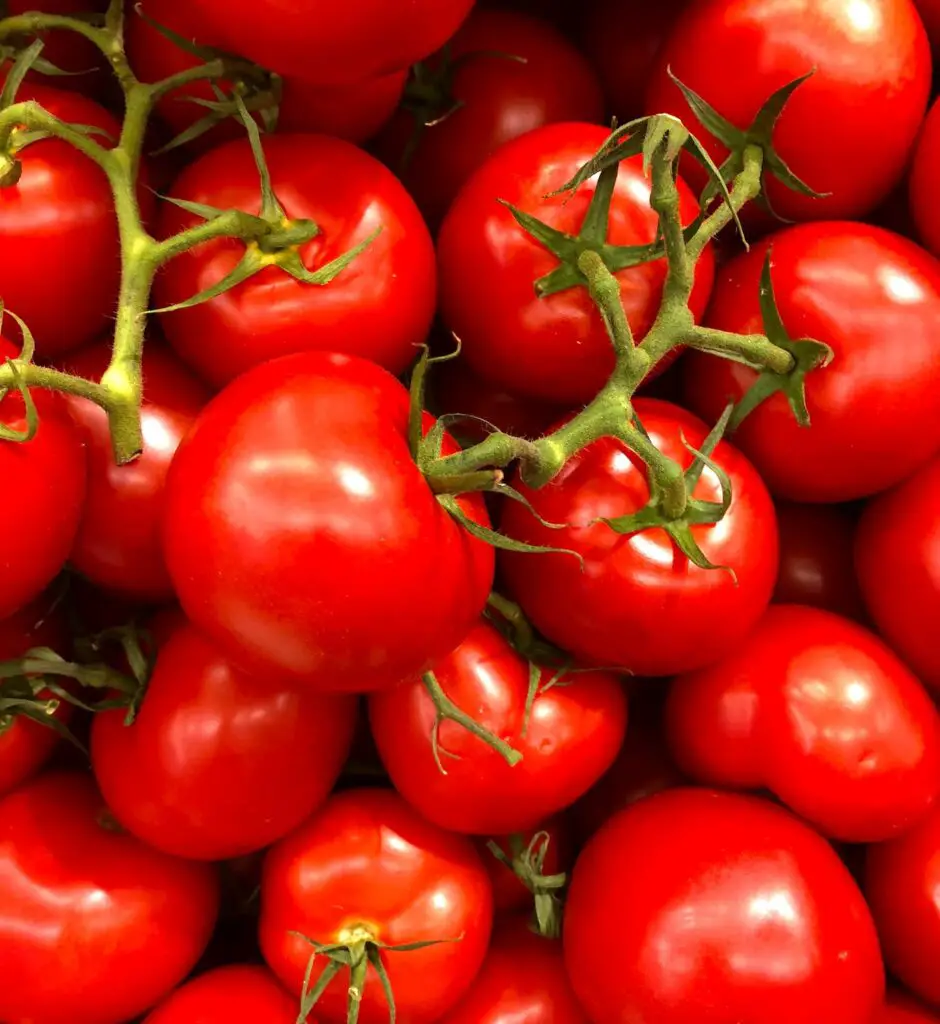
How do you maintain the growth of tomatoes?
Here are some key steps for maintaining the growth of tomato plants:
- Proper soil preparation: Tomatoes prefer well-drained soil that is rich in organic matter. Before planting, add compost or well-rotted manure to the soil to improve its fertility.
- Adequate water: Tomatoes need a consistent supply of water, especially during periods of drought. Irrigate the soil deeply, taking care not to get water on the leaves, as this can promote fungal diseases.
- Appropriate light: Tomatoes need full sun to thrive, so choose a planting location that receives at least 6 hours of direct sunlight each day.
- Proper spacing: Tomatoes need adequate space to grow, so plant them at least 24 to 36 inches apart, depending on the variety.
- Support: Most tomato varieties will benefit from some form of support, such as stakes, cages, or trellises, to keep the plants upright and prevent the fruit from touching the ground.
- Pruning: Prune off the lower branches of tomato plants to improve air circulation and reduce the risk of disease. Remove any diseased or yellow leaves to prevent the spread of disease to healthy leaves.
- Fertilisation: Tomatoes benefit from regular fertilisation. Use a balanced, slow-release fertiliser, or apply a side dress of compost or well-rotted manure when the plants are about 6 inches tall.
- Disease and pest management: Monitor your plants regularly for signs of disease and pests. Keep the garden clean, remove any diseased plants, and use appropriate control measures, such as row covers, neem oil, or insecticidal soap, if necessary.
By following these steps, you can help ensure that your tomato plants grow healthy and strong, producing a bountiful harvest.
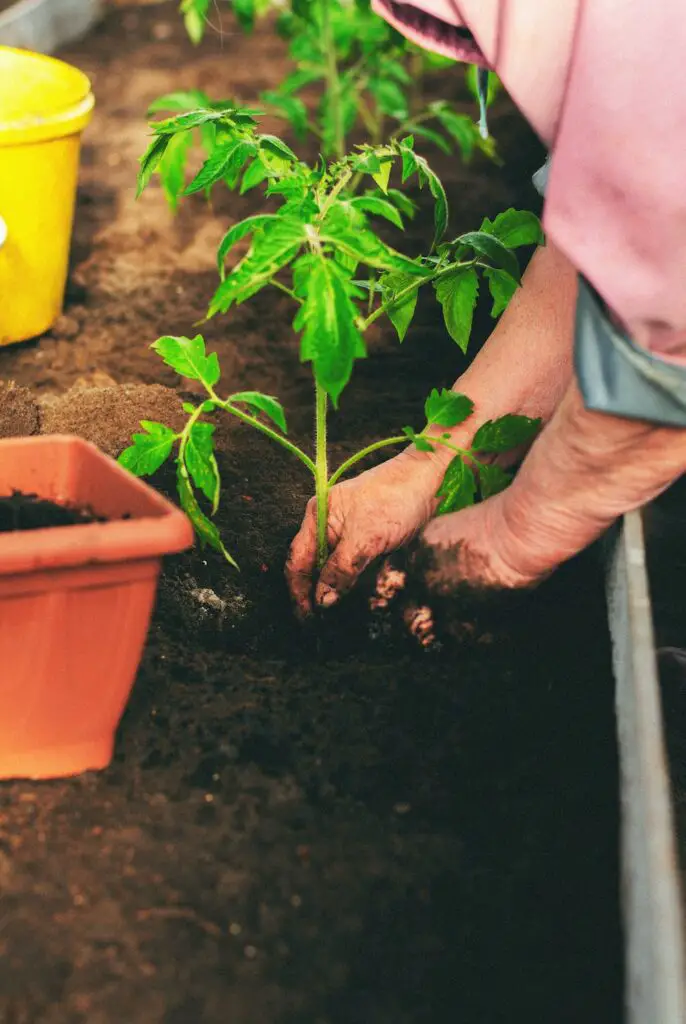
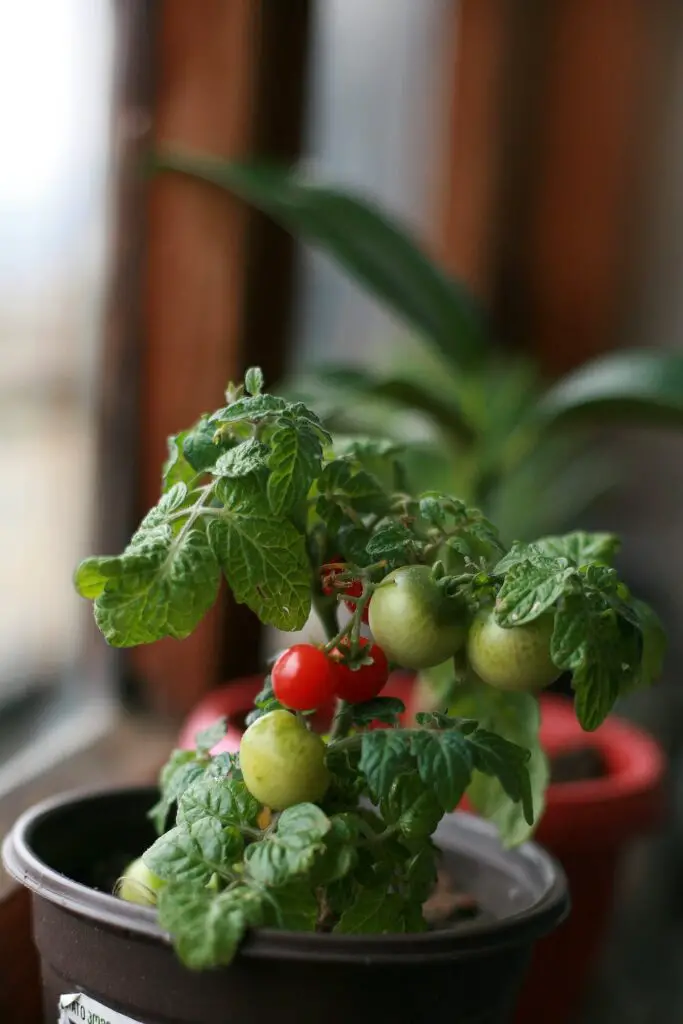
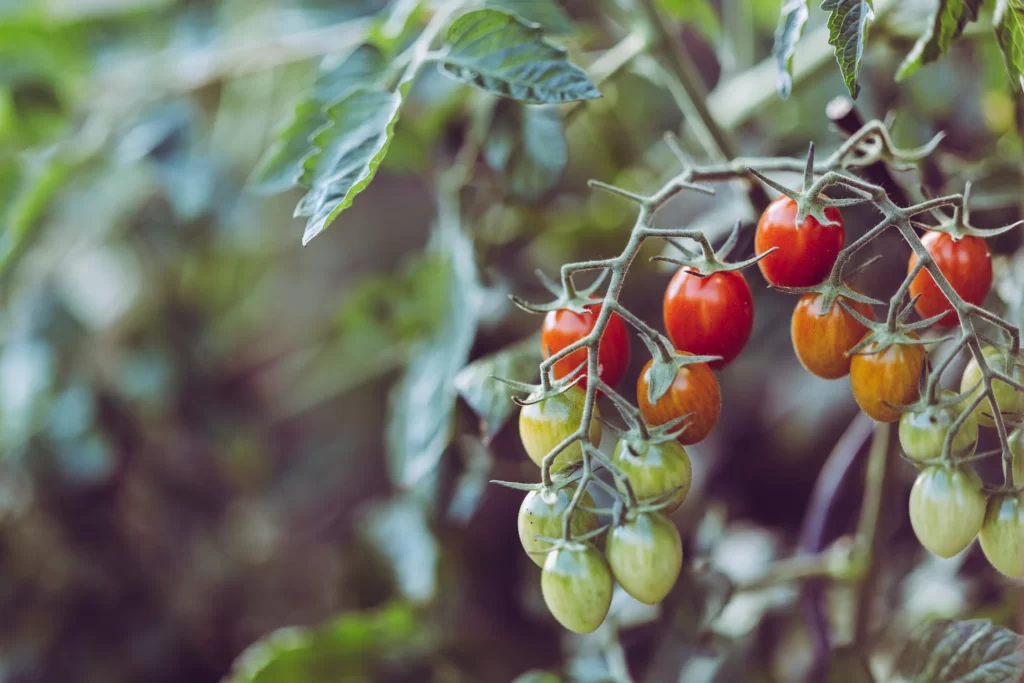
What are the pests affecting tomatoes?
Several pests can affect tomato plants and reduce their yield or quality. Some of the most common pests include:
- Aphids: These tiny, sap-sucking insects can damage leaves and stems, and can also spread plant viruses.
- Cutworms: These caterpillars cut off young plants at the soil line, killing them.
- Tomato fruit worms: These caterpillars feed on the fruit of the tomato plant, causing damage and reducing the quality of the fruit.
- Hornworms: These large caterpillars can quickly defoliate a tomato plant and also feed on the fruit.
- Whiteflies: These small, white insects feed on the sap of tomato plants, causing damage to leaves and reducing plant growth.
- Slugs and snails: These molluscs feed on the leaves, stems, and fruit of tomato plants, leaving behind holes and damaging the plant.
- Flea beetles: These small, jumping beetles feed on the leaves of tomato plants, causing small holes and reducing plant growth.
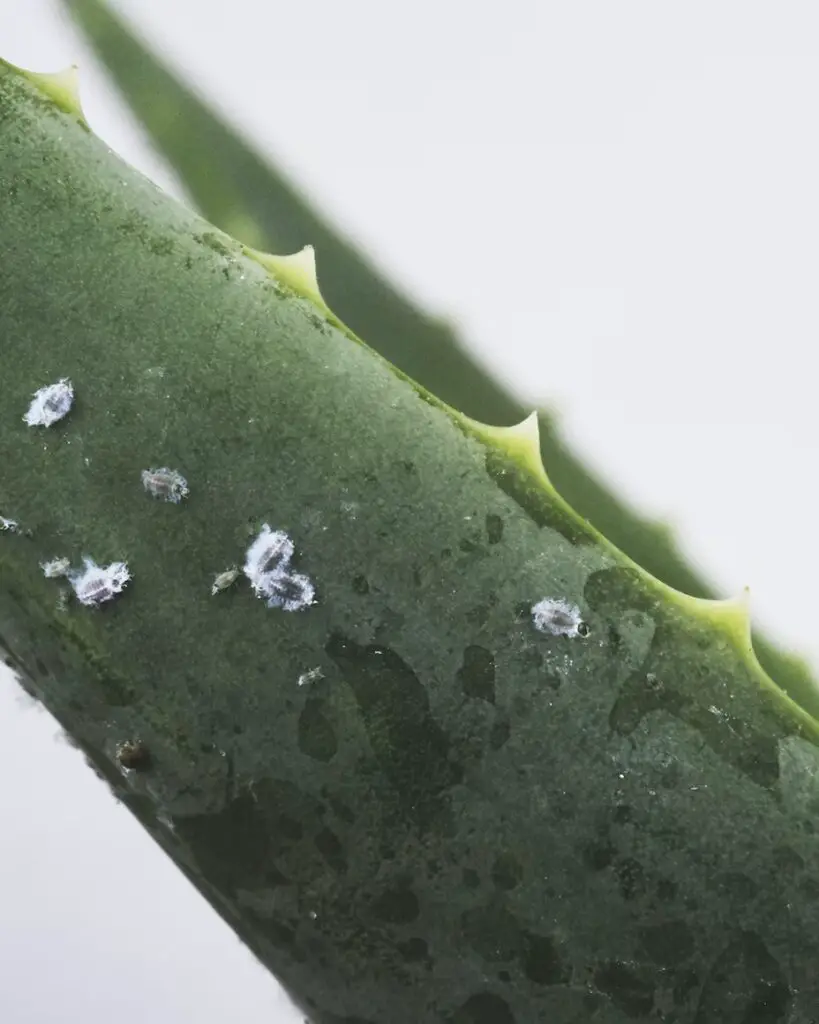
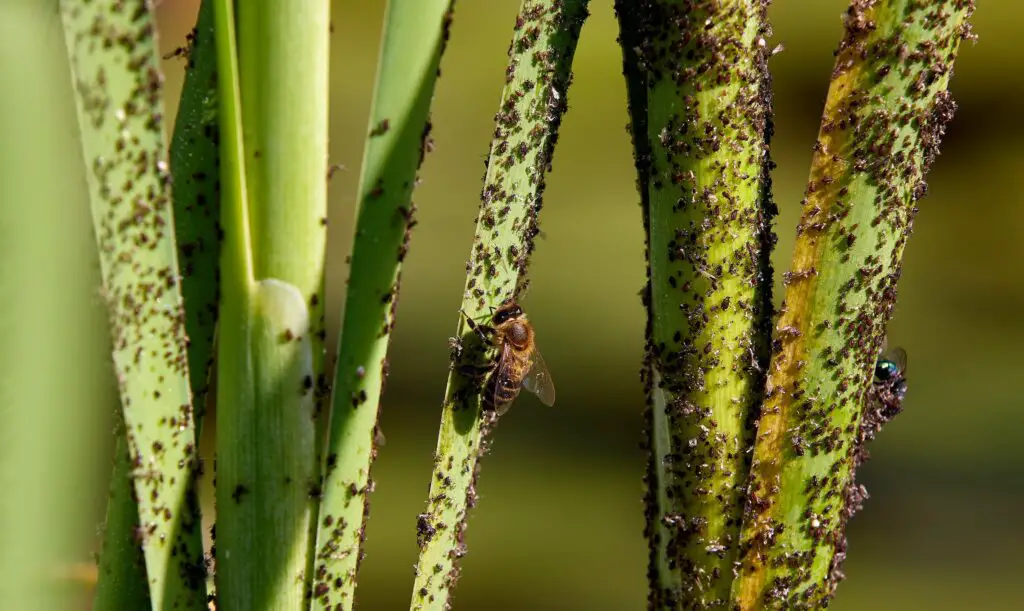
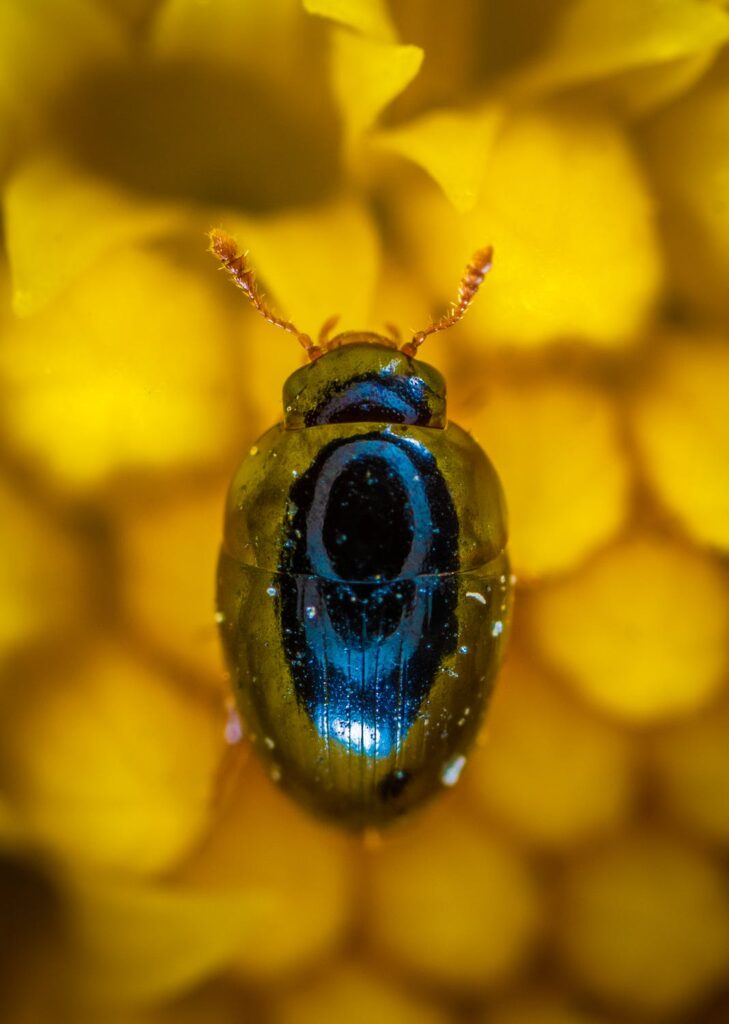

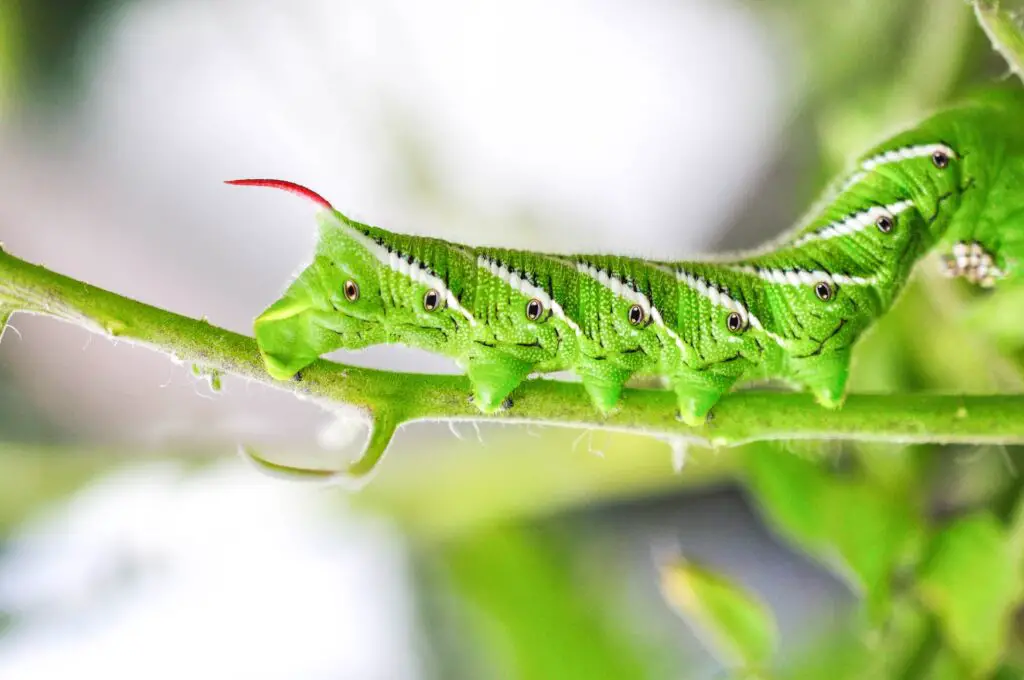
It is important to monitor your plants regularly and take action quickly if you notice any signs of damage. Use integrated pest management (IPM) techniques, such as hand-picking, using row covers, and applying natural pest control methods. These can help reduce pest populations and minimise the use of harmful chemicals. Insecticides should be used according the label instructions. Use with caution to minimise any negative impact on beneficial insects and the environment.
Various companion plants that can be grown with tomatoes
Tomatoes can be grown with additional companion plants that provide specific benefits. These include improved growth, reduced pest and disease pressure, or enhanced flavour. Here are a few common companion plants for tomatoes:
- Basil: Tomatoes and basil have a natural affinity for each other, and planting them together can improve the flavour of both plants. Basil is also said to repel pests, such as flies and mosquitoes, that can damage tomato plants.
- Marigolds: Marigolds release chemicals into the soil that can deter nematodes, which are tiny parasitic worms that can damage the roots of tomato plants. In addition, marigolds can attract beneficial insects, such as ladybugs, that feed on aphids and other pests.
- Borage: Borage produces nectar that attracts pollinators, such as bees, to the garden. This can improve the pollination of the tomato flowers, leading to a larger and more abundant crop.
- Garlic: Garlic is said to repel pests, such as aphids and Japanese beetles, that can damage tomato plants.
- Nasturtiums: Nasturtiums produce chemicals that can deter pests, such as aphids and whiteflies, from feeding on tomato plants. Nasturtiums are also said to improve the flavour of tomatoes when planted near them.
- Carrots: Tomatoes and carrots can be grown together in the same bed, as they have similar growing requirements and do not compete with each other for nutrients.
- Chives: Chives release compounds into the soil that can deter some root-knot nematodes and other pests from damaging tomato plants.
By planting these companion plants with your tomatoes, you can create a diverse garden ecosystem that can improve the health and productivity of your tomato plants.
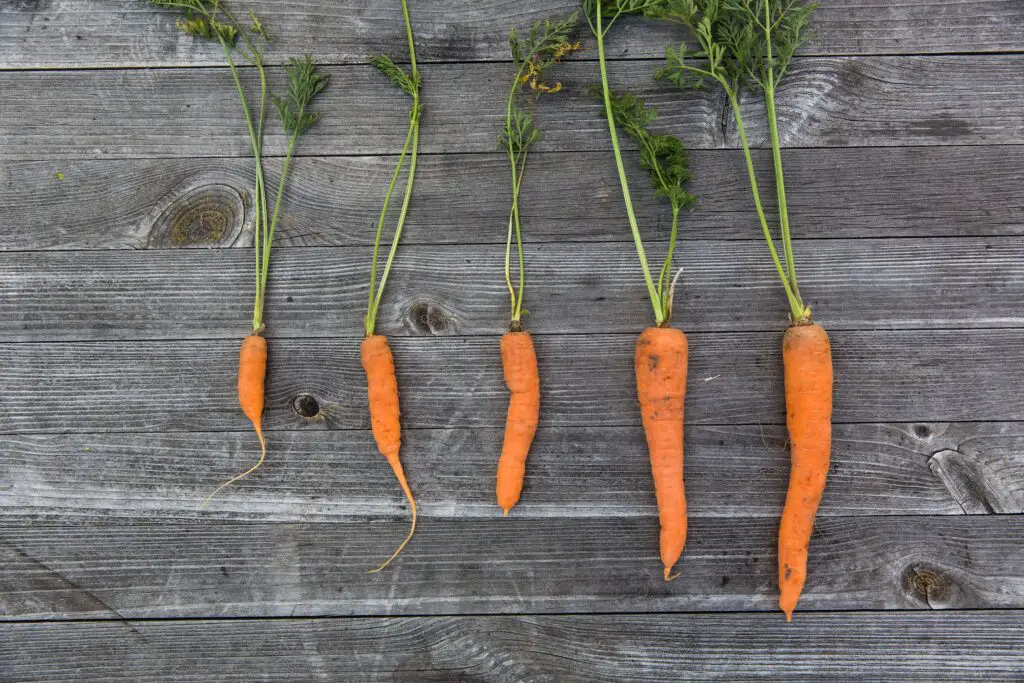
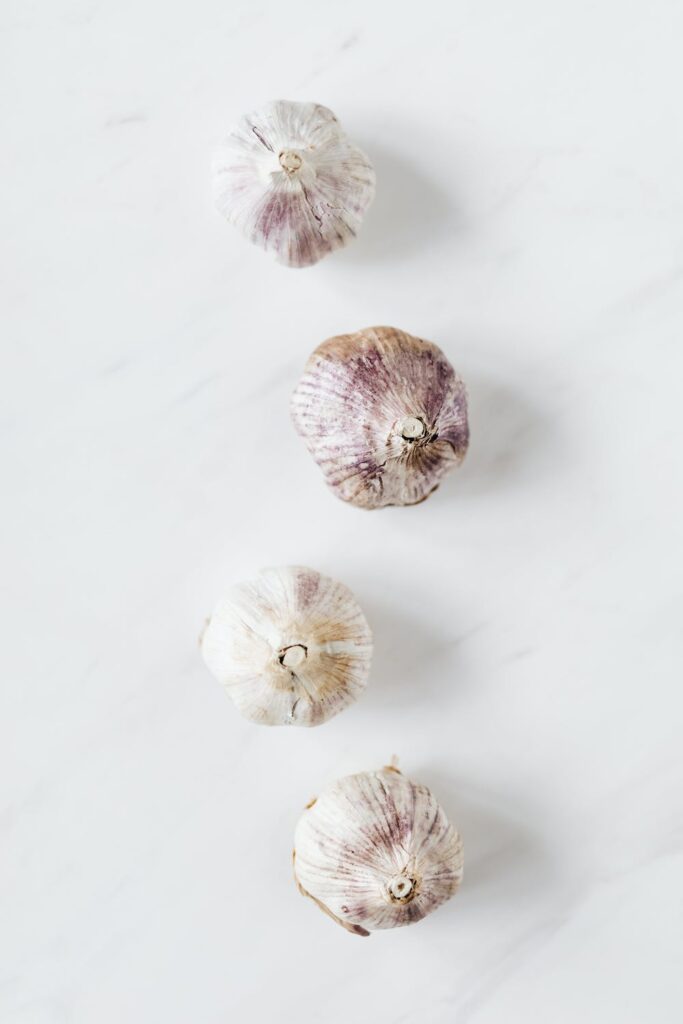

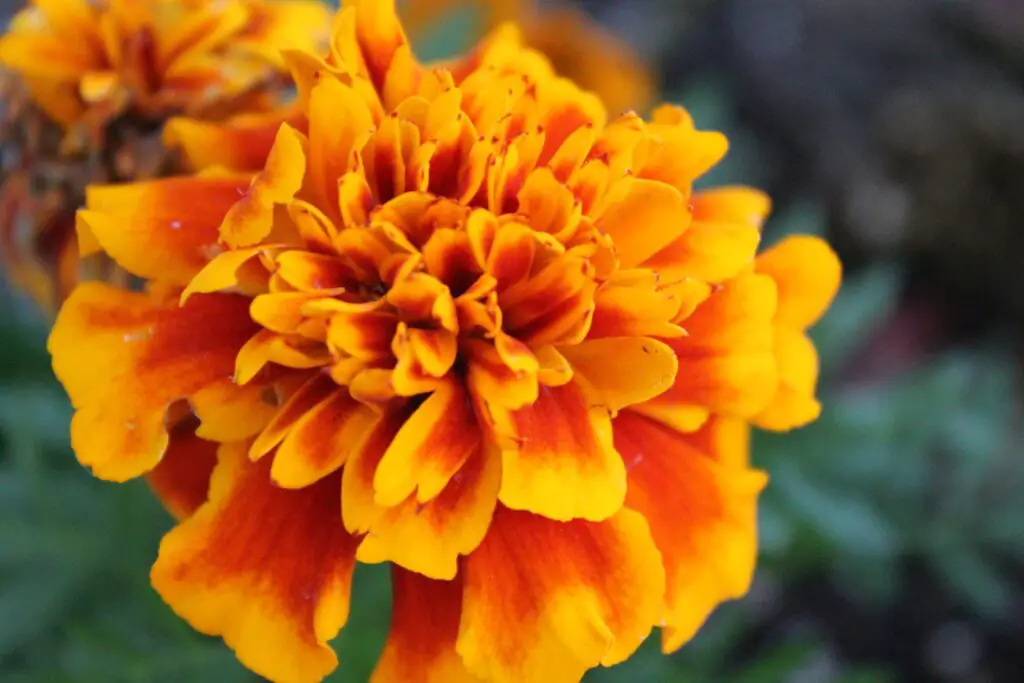

Conclusion
Growing tomatoes can be a rewarding and delicious experience, whether you have a small garden or a large farm. To ensure the best results, choose the right type of tomato for your climate, provide adequate water and nutrients. Also protect your plants from pests and diseases. Additionally, growing tomatoes with companion plants can provide benefits such as improved growth, reduced pest pressure, and enhanced flavour. With the right care and attention, you can enjoy a bountiful harvest of juicy, ripe tomatoes for months to come.
